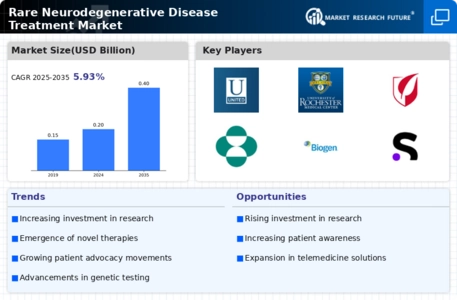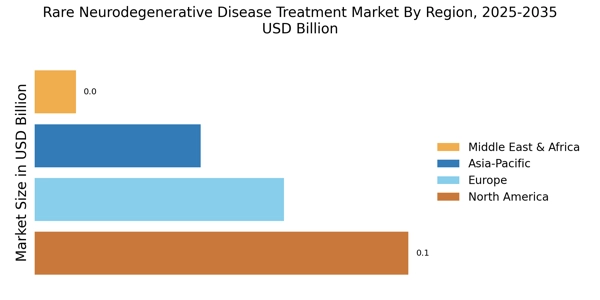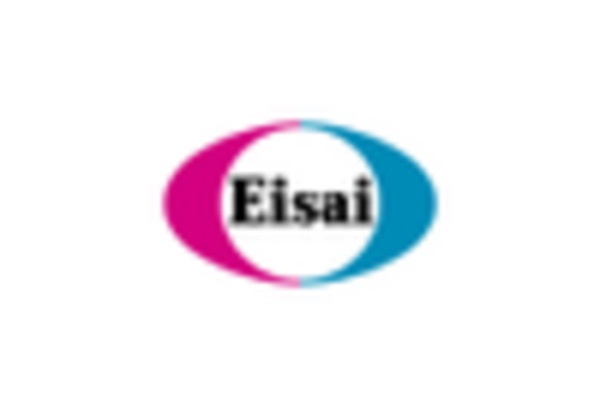Rare Neurodegenerative Disease Treatment Market Summary
As per MRFR analysis, the Rare Neurodegenerative Disease Treatment Market was estimated at 0.2 USD Billion in 2024. The market is projected to grow from 0.2119 USD Billion in 2025 to 0.377 USD Billion by 2035, exhibiting a compound annual growth rate (CAGR) of 5.93 during the forecast period 2025 - 2035.
Key Market Trends & Highlights
The Rare Neurodegenerative Disease Treatment Market is poised for substantial growth driven by innovative therapies and increasing disease prevalence.
- The emergence of gene therapy is reshaping treatment paradigms, particularly in the context of rare neurodegenerative diseases.
- North America remains the largest market, while the Asia-Pacific region is recognized as the fastest-growing area for these treatments.
- Enzyme replacement therapy continues to dominate the market, whereas gene therapy is rapidly gaining traction as a promising approach.
- The rising prevalence of rare neurodegenerative diseases and advancements in precision medicine are key drivers propelling market expansion.
Market Size & Forecast
| 2024 Market Size | 0.2 (USD Billion) |
| 2035 Market Size | 0.377 (USD Billion) |
| CAGR (2025 - 2035) | 5.93% |
Major Players
Biogen (US), Roche (CH), Novartis (CH), Eisai (JP), Sanofi (FR), Amgen (US), AbbVie (US), Celgene (US), Teva (IL)


















Leave a Comment